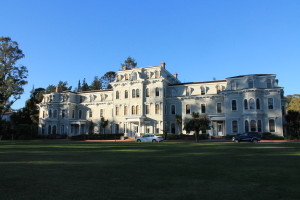
Nine decades ago this year, the historic Mills College Children’s School began.
The Children’s School origins traces back to 1926 when it was a nursery school. Since then it has been used for educating not just the children who attend the school, but also the Mills students aspiring to be teachers. Laboratory schools offer students the chance to really experience the classroom, and Mills’ is the oldest on the West Coast.
“Our goal is to prepare leaders with the kind of multifaceted experience and knowledge that will lead to creative and successful solutions to the challenges facing public schools today,” Mills President Alecia DeCoudreaux said in a press release on the Mills website.
According to the press release, the school has been housed at several different locations on campus over the years, such as in Vera Long before it housed the Social Sciences. Finally in 2000, a new building near the children’s school was built on the southwest side of campus where it has remained since.
Child development major Terrapin Fraizer works at the Children’s School and finds it to be an extremely fulfilling position because it will help not only with her major, but also with her aspirations to become a teacher.
“This is an experience I would not have at a normal school just taking education classes, and there is so much to be learned hands on,” Fraizer said.
Fraizer is thrilled to be working at the school because it gives her an opportunity to teach through a social justice lens.
“I get to take identity politics as this large topic and ask how can we make this developmentally appropriate for kindergartner/first grade curriculum,” Fraizer said.
Even students who are not education majors find work to be enjoyable at the Children’s School. History major Emily Harmon said that working with the children not only provides different learning opportunities, but it also allows her to meet people outside of the residence halls.
Fraizer said she hopes the Children’s School will continue to be innovative in teaching kids.
“We’re constantly reflecting on our practice, and everyone who is there, really wants to be there,” Fraizer said.


